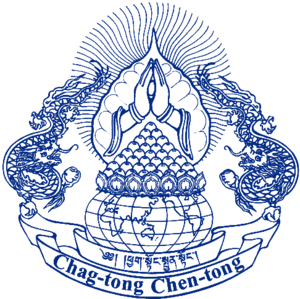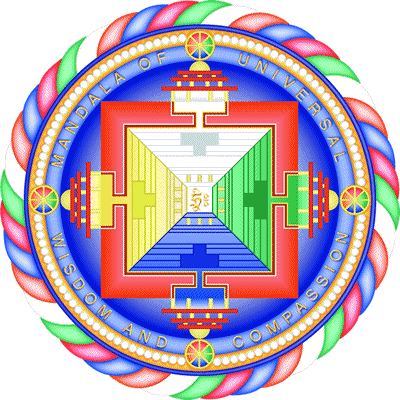The next session is on Saturday, November 12 - 10 am - 12 am ADST ~ Everyone is warmly welcomed
~ Everyone is warmly welcomed
This is the final 2022 session - The Sutra will be continued in the 2023 Program
Join Zoom Meeting
https://utas.zoom.us/j/
Meeting ID: 827 0933 2340
This year's Sutra to be explored is The Noble Application Of Mindfulness of the Sacred Dharma kindly accessed via 84,000 Translate
Please join us to explore and study this wonderful text with us. Session 6 : For preparation, please continue reviewing Chapter 2: - Mindfulness of Experience ~ and onwards We will look forward to your participation in the discussion and bring along your questions for this topic. Please complete reading Chapters 1 -3 n full for review
Sonam will depend on our review and questions for interactive discussions during the 2-hour monthly session instead of commenting on each verse by verse
ALL ABOUT: Sonam Thakchoe has kindly been supporting CTCT Program for the previous 10 years leading study groups on Shantideva's Guide to Bodhisattvas Way of Life, Nagarjuna's Precious Garland, and various Sutras for which we extend our greatest appreciation and thanks - ongoing.
2022 Monthly Dates : June 25,July 30,August 27,Sep 24,Oct 29,( Nov 13?)tbc
Read on ....'A word from Sonam about the Sutra
The epic discourse of The Application of Mindfulness of the Sacred Dharma (AMSD) unfolds as a single, sustained reply to a short question that is put to the Buddha Śākyamuni as the sūtra opens. A group of newly ordained monks have been challenged by the members of another religious group, who suggest that the Buddha’s teachings are indistinguishable from those of their own teacher. Not knowing how to reply, the monks request that the Buddha explain how the path of the sacred Dharma is unlike any other. As the Buddha responds to the monks, he describes the path from the perspective of an adept meditating monk, who applies the Dharma teachings correctly and so discovers the truths of the Dharma. In an account that spans the full spectrum of life in saṃsāra, from the horrifying misery and intense pain of the lower realms to the enrapturing beauty and bliss in the heavens, the Buddha explains how different kinds of physical, verbal, and mental behavior of humans lead to rebirth in such realms of existence. PLEASE Continue HERE in the Reading Room
Please join us to explore and study this wonderful text with us. Session 1: For preparation, please read Introduction, Prologue, and Chapter 1: 1.1 to 1.78 Ten Nonvirtuous Actions ~ We will look forward to your participation in the discussion.
Read on ....'A word from Sonam about the Sutra
The Application of Awareness of the True Dharma (Saddharmasmṛtyupasthāna-sūtra =dam pa’ chos dran par nye bar gzhag pa’i mdo) unravels as the most detailed and sustained reply the Buddha offers to a concise question that is put him by the newly ordained monks. When a group of the newly monks were challenged by the members of a non-Buddhist mendicants who proclaimed that the Buddha’s moral teachings are no different from those of their own teachers. Specifically, the non-Buddhists asked the following questions:
“Ah, you Śākya followers, does not your mendicant Gautama teach that misdeeds of the body are unattractive, ugly, and unpleasant, and that one should refrain from rejoicing in them even when they are done by another? We also consider misdeeds of the body to be unattractive, ugly, and unpleasant, and we do not rejoice in them even when done by others. Does not your mendicant Gautama teach that misdeeds of speech are unattractive, ugly, and unpleasant, and that one should refrain from rejoicing in them even when done by another? We also consider misdeeds of speech to be unattractive, ugly, and unpleasant, and we do not rejoice in them even when done by others. Does not your mendicant Gautama teach that misdeeds of the mind are unattractive, ugly, and unpleasant, and that one should refrain from rejoicing in them even when done by another? We also consider misdeeds of the mind to be unattractive, ugly, and unpleasant, and we do not rejoice in them even when done by others. What difference is there [F.82.b]16 [F.83.a] between your mendicant Gautama’s Dharma-Vinaya and our own? What are the ideas? What are the distinctive points? What makes the Dharma-Vinaya of your mendicant Gautama superior to ours? The mendicant Gautama claims that he is omniscient.”[1]
When faced with these questions by the wandering non-Buddhist practitioners, the group of newly ordained monks neither approved nor responded, instead waited for the advice from the venerable Śāradvatīputra who was not present during the discussion. Śāradvatīputra recommended, the newly ordained monks to take up the questions to the Buddha and request to explain how and why path of true Dharma is unique and distinct. The Discourse on The Application of Mindfulness of the True Dharma is the Buddha’s response to the question, in which he offers the most detailed narrative account of the path from the phenomenological standpoint of a skilled and seasoned meditator who properly applies the Dharma teachings and progressively discovers the true Dharma. The discourse provides the full phenomenological spectrum of an advanced meditator who directly knows the complexity and profound matrix of the interrelationship between moral versus immoral actions, skilful versus unskilful action, wisdom and confusion, and their profound implication as the causes resulting the effects––either the existential battles in the saṃsāric life associated with terrifying torments and strife of the lower existential realms or the enrapturing bliss, beauty of the higher existential planes, still bounded and fettered by the laws of pathological attraction, repulsion and confusion and ultimately to a complete and utter freedom of nirvāṇa (complete extinction of the pathology of attraction, repulsion and confusion). More significantly the Buddha describes the progressive development of the four applications of awareness: (1) the application of awareness of sensation, (2) the application of awareness of body; (3) the application of awareness of mind, (3) the application of awareness of mental contents (dharmas).
Please join us, if you have time, to explore and study this wonderful text with us.
Session 1:
For preparation, please read Introduction, Prologue and Chapter 1: 1.1 to 1.78 Ten Nonvirtuous Actions
We will look forward to your participation in discussion.
Participation is free or by your kind generosity - please make a general donation HERE using Ref SSF
--------------------------------------------------------------------------------------------------------------------------------------------------
2021 Program ONLINE ~LAST SESSION FOR 2021 ~ Saturday, November 20
MONTHLY Discourse | Discussion | Meditation 10 am - 12.30 AEDT
The 'The Lotus Sutra' Expounded by Shakyamuni Buddha at Vultures Peak
"...the Buddha’s ultimate teaching, supreme over all other sūtras."
2021 Audio recordings can be found on CTCT Youtube
Reading for November conclusion - Chapters 20-27 This link will take you to the Introduction section of the Sutra which has a "Detailed Summary of The White Lotus of the Good Dharma " which we will follow in the final session
LOTUS SUTRA reading room access - Please read prior to class and prepare any questions https://read.84000.co/translation/UT22084-051-001.html
From Sonam - Dear Dharma friends,
Chagtong Chentong Tibetan Buddhist Centre welcomes you to join another year of monthly Sūtra Study Forum with Sonam Thakchoe. The Sūtra Study Forum aims is to develop deeper insight into the words (sutras) of the Buddha through rigorous reflective, interactive, engaging sessions.............
We proceed with our study in two stages: first, each of us does the homework, and reads individually the assigned sutra, prepares questions for discussions and highlights the crucial/important passages. Then we meet on a monthly basis when the group comes together online for the Study Forum. There we discuss your questions, clarify your doubts and go through your highlighted crucial passages to uncover new meanings. We welcome anyone who is interested in studying the words of the Buddha.
The Lotus Sūtra
The White Lotus of the Good Dharma, popularly known as the Lotus Sūtra, is taught
by Buddha Śākyamuni on Vulture Peak to an audience that includes
bodhisattvas from countless realms, as well as bodhisattvas who emerge out
from the ground from the space below this world. Buddha Prabhūtaratna, who
has long since passed into nirvāṇa, appears within a floating stūpa to hear the
sūtra, and Śākyamuni enters the stūpa and sits beside him. The Lotus Sūtra is
celebrated, particularly in East Asia, for its presentation of crucial elements of the
Mahāyāna tradition, such as the doctrine that there is only one yāna, or
“vehicle”; the distinction between expedient and definite teachings; and the
notion that the Buddha’s life, enlightenment, and parinirvāṇa were simply
manifestations of his transcendent buddhahood, while he continues to teach
eternally. A recurring theme in the sūtra is its own significance in teaching these
points during past and future eons, with many passages in which the Buddha
and bodhisattvas such as Samantabhadra describe the great benefits that come
from devotion to it, the history of its past devotees, and how it is the Buddha’s
ultimate teaching, supreme over all other sūtras.
One of the Buddha’s great compassionate and therefore moral acts is to preach the Dharma to others thereby they may in turn practice it and therefore be liberated from suffering. The very act of teaching the doctrine, which may amount to nothing more than reading the texts aloud so people can hear, is in itself an ethical deed. Ethical deeds, according to the sutra, are rewarded with good karma and a happy existence and rebirth.The Lotus Sutra recognizing this logic, naturally recommends text recitation as a part of good Buddhist practice. It also, of course, happens to be the easiest thing to do, and therefore over time, in actual Buddhist practice, Buddhists would simply recite and reproduce the sutras, including the Lotus Sutra itself, as a devotional act to acquire good merit. In due course, the Lotus Sutra would go on to become a central part of East Asian Buddhism to the point where it is virtually and uniquely a staple of East Asian Buddhist practice. In China the school most associated with the study and worship of the Lotus Sutra is the school known as Tian’tai. This school would be a significant rival to Ch’an Buddhism given their different emphasis on text analysis and text recitation. In Japan, the Japanese monk Nichiren also founded a school, Nichiren-shu, that is (and continues to be) devoted primarily to the recitation of the Lotus Sutra and ritual esotericism. Therefore the Lotus Sutra represents best example of Buddhist devotionalism, paramount importance in China, Tibet and beyond. The text itself recommends devotionalism and recitation in order to accumulate good karma.
'The Lotus Sutra ' Expounded by Shakyamuni Buddha at Vultures Peak to be cfwd to 2021 Program
Sonam has requested all intending participants read the Sutra through prior to each session together as a prerequisite- Questions for the session please email
All teaching sessions offered freely
Your choice of donation if you wish would be especially appreciated during these times supporting the Centres ongoing activities - your kind support ensures the Centre is able to plan and facilitate a teaching program ongoing. please check Bank Transfer details here on our DONATE page - using Ref: Gen Donation for your deposit - a million heartfelt thanks in advance!
-----------------------------------



